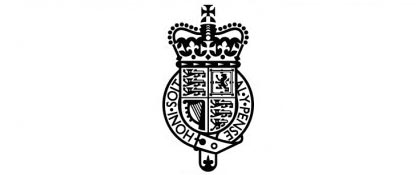Collecting the Periphery Part One
Collecting the Periphery Part One
Most of what we see here on the GMIC and on other military focused forums is mainstream and by that I am referring to the collecting of medals. Medals for campaigns, long service, good conduct and “been there and got the T shirt” fill online auction pages and the catalogues of dealers around the world. Interestingly there are many areas of civilian medals that seem to have gone unnoticed by the collecting world in general.
Police medals and equipment will not be included in this essay simply because I would like to concentrate on medals not dealing with keeping the peace which would, of course, include both the military and police.
The first of these non-military or police medals that comes to mind is the multitude of Red Cross medals that are available to the collector. The Red Cross, founded by Henry Dunant in 1863 in Geneva Switzerland, has been on hand to give care and comfort in all the wars since its founding as well as providing relief during times of natural disasters and carrying out first aid training to the civilian population. The collecting of Red Cross memorabilia is perhaps not as far from main-stream as I would like to take today’s discussion. I say this as not only is the Red Cross, Red Crescent, St. John’s Ambulance among others, on hand during armed conflicts but, in the case of the Red Cross, there were WWII medals, the British War Medal and Victory medals named to members of the Red Cross. An example of this from my own collection is the BWM and Victory pair named to, J. (Jeanie) Low, B.R.C.S. and a group which in includes a St. John Ambulance Brigade Medal named to Special Constable Sgt. W. (William) C. Holley, Hants (Hampshire County) S.J.A.B. 1953. Sgt. Holley served with the S.J.A.B. from 1940 to 1961. His group also includes the British Defence Medal and Special Constabulary Long Service and Good Conduct Medal. Another example from my collection is a Red Cross Medal for Proficiency in Anti-gas Training named to 6938 C. Barclay who served with the Red Cross from 1938 to 1968. There is little doubt that the anti-gas training was connected with the Second World War threat of gas attack from Germany.
Perhaps one of the best examples of the close ties between the military and the Red Cross may be found in the study of post Shogunate (1868 onward) Japanese Medals. The following is a quote from “In the Name of a Living God” by Paul L. Murphy and Steven L. Ackley. If you don’t have this book and have any interest in non-government badges and medals of Imperial Japan I highly recommend you purchase one. You WILL NOT regret it.
“The forerunner of the Japanese Red Cross Society was the Hakuaisha (Philanthropic Society) which was founded in 1877 by Count Tsunetami Sano to help those who were wounded in the Satsuma Rebellion earlier that year. Japan signed the Geneva Convention in 1886 and in the following year the Hakuaisha changed its name to the Japanese Red Cross Society (Nippon Sekijujisha). It was recognized as such by the International Committee of the Red Cross on September 2, 1887.
The society is under the patronage of the Imperial family and the symbol of the society is taken from the hair pin of the Meiji Empress that featured a Pawlonia, bamboo and ho-o bird. This design and/or the Geneva cross features on all of the badges and medals of the society”.
Membership in the Nippon Sekijujisha was very common among military personnel so much so that many photos and medal groups may be found with the Red Cross Society’s medal included. In my own collection I have a photo of a soldier wearing the 1894-1895 War Medal (Sino-Japanese War) alongside the Nippon Sekijujisha Men’s Life Membership Medal. Another example, again from my own collection, is a four place ribbon bar with the Order of the Rising Sun (Kyuokujitsusho), Manchurian Incident (1931-1934), China Incident (1937 – 1945) along with the ever present Red Cross Medal ribbon. While doing research for this article I saw a group of Japanese medals and the description was of all of the military medals followed by “...and the Red Cross medal, of course”, demonstrating just how common it is to find the Red Cross Medal associated with the Japanese Military. I apologize that I cannot give proper credit for the quote above as I did not write down the source and my memory fails me on this point. If it was one of our fellow GMIC members please accept my sincere apologies.
Please watch for Collecting the Periphery Part 2 coming soon where we will travel further afield away from mainstream collecting.
Sources:
Wikipedia – International Red Cross and Red Crescent Movement
Orders and Medals of Japan and Associate States – James W. Peterson
In the Name of a Living God – Paul L. Murphy & Steven L. Ackley
Reference to specimens – Author’s collection



1 Comment
Recommended Comments